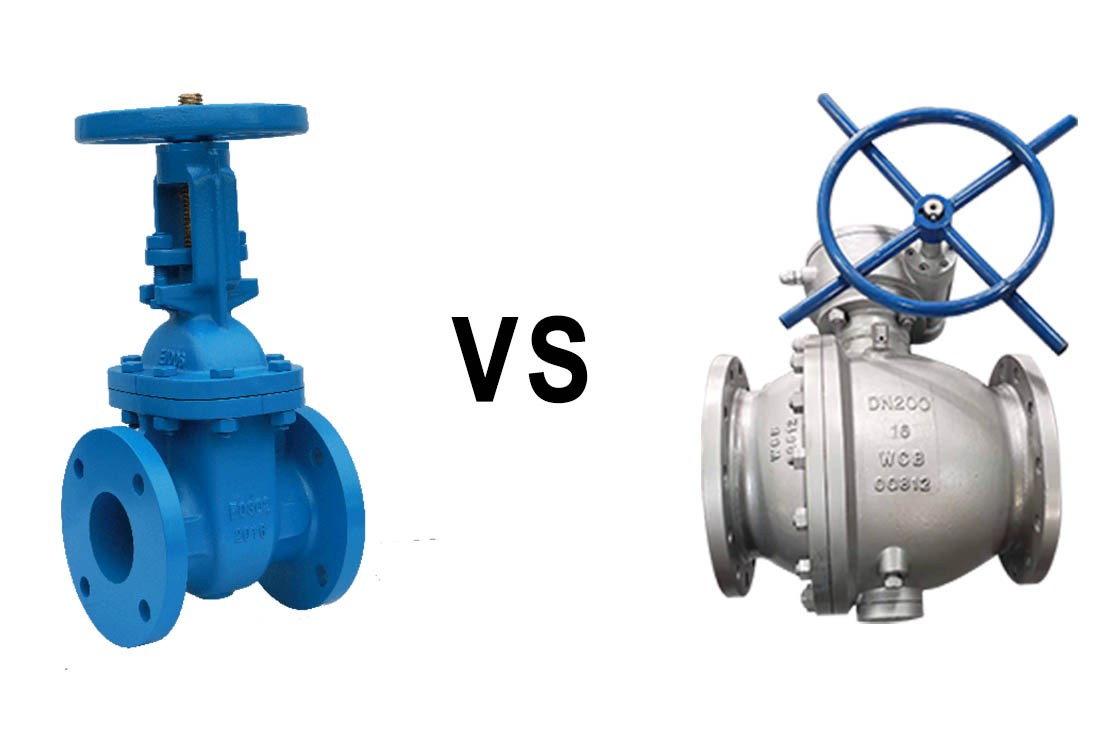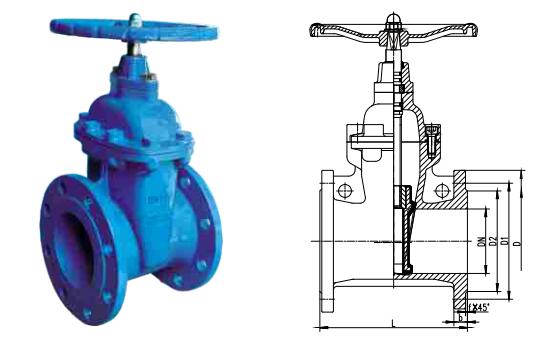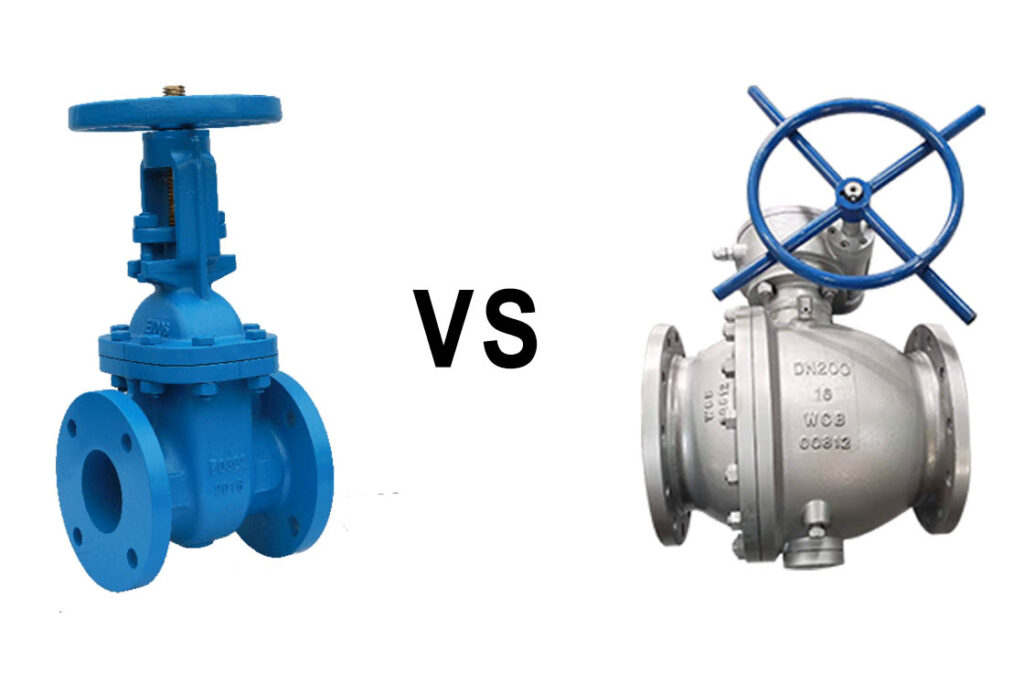
Understanding the differences between gate valves and ball valves is essential for anyone working in industries that rely on fluid control systems. Gate valves and ball valves are two common types of valves used to regulate the flow of liquids or gases in plumbing, industrial, and manufacturing applications. どちらのバルブも同じ目的を果たしますが、, they have distinct features and functions that make them suitable for specific situations.
Choosing the right valve for a particular application is crucial for ensuring efficient operations, preventing potential safety hazards, and avoiding unnecessary costs. The decision between using a 仕切り弁 or a ボールバルブ depends on various factors such as the type of fluid being controlled, the pressure and temperature conditions, システムの特定の要件.
Gate valves are typically used in applications where a straight-line flow with minimal restriction is required. They feature a sliding gate that moves up and down to control the flow of fluid through the valve. 完全に開いているとき, gate valves allow unrestricted flow with low pressure drop. This characteristic makes them ideal for applications that require full flow capacity without significant resistance.
一方で, ball valves are known for their versatility and durability. They consist of a spherical disc (the “ball”) with a hole in it that aligns with the pipe when opened or blocks it when closed. Ball valves offer excellent shut-off capabilities due to their tight sealing mechanism, making them suitable for applications that require precise control over fluid flow. さらに, ball valves can handle high-pressure and high-temperature environments more effectively than gate valves.
Choosing between gate valves and ball valves depends on several considerations. 例えば, gate valves are often preferred in applications where infrequent operation is expected since they can be prone to leaks if not operated regularly. 一方で, ball valves are more reliable in situations where frequent operation is required as they provide better sealing performance even after multiple cycles.
要約すれば, understanding when to use gate valves versus ball valves is crucial for selecting the best valve for a specific application. By considering factors such as flow requirements, pressure conditions, and operational frequency, エンジニア, 技術者, and professionals in the plumbing and industrial sectors can make informed decisions that optimize efficiency, ensure safety, and minimize costs.
At ファープロバルブ, we understand the importance of choosing the right valve for your applications. Our team of experts is dedicated to providing reliable recommendations and high-quality gate valves and ball valves that meet your specific needs. Trust our expertise to help you make the best choices for efficient operations and safe fluid control systems.
ゲートバルブ
Gate valves are a type of valve that is widely used in various industries, including the oil and gas industry, 水処理プラント, and power generation plants. These valves are designed to control the flow of fluids by using a sliding gate or wedge mechanism. Gate valves offer several advantages, but they also have some disadvantages that need to be considered when choosing the right valve for specific applications.
Advantages of Gate Valves
One of the key advantages of gate valves is their ability to provide a tight seal. When fully closed, gate valves create a complete seal, preventing any leakage or loss of fluid. This feature makes gate valves ideal for applications where maintaining a tight seal is crucial, such as in pipelines carrying hazardous or corrosive substances.
Another advantage of gate valves is their full flow capacity. Unlike some other types of valves that may restrict the flow due to their design, gate valves allow for unobstructed flow when fully open. This characteristic makes gate valves suitable for high-pressure applications where maximizing flow rates is essential.
Disadvantages of Gate Valves
Despite their advantages, gate valves also have some limitations that need to be considered. One disadvantage is their slow operation compared to other types of valves. The sliding gate mechanism requires multiple turns to fully open or close the valve, which can result in slower response times. In situations where quick adjustments or frequent opening and closing are necessary, gate valves may not be the most efficient choice.
Gate valves are also prone to corrosion and accumulation of debris over time. The sliding gate mechanism can trap particles and contaminants present in the fluid flowing through the valve. This accumulation can affect the smooth operation of the valve and potentially lead to blockages or malfunctions if not properly maintained.
さらに, gate valves are not suitable for スロットリング purposes. Throttling refers to adjusting the flow rate by partially opening or closing the valve. Gate valves are designed primarily for fully open or fully closed positions, and attempting to use them for throttling can result in excessive wear and damage to the valve mechanism.
Applications of Gate Valves
Gate valves find extensive use in various industries due to their specific advantages. 石油・ガス業界では, gate valves are commonly employed in pipelines and refineries for their ability to provide a tight seal and handle high-pressure conditions. Water treatment plants also utilize gate valves for controlling the flow of water during different treatment processes. The power generation sector relies on gate valves for regulating the flow of steam or other fluids within power plants.
要約すれば, understanding the advantages and disadvantages of gate valves is crucial when selecting the right valve for specific applications. Gate valves offer a tight seal, full flow capacity, and are suitable for high-pressure environments. しかし, they have limitations such as slow operation, susceptibility to corrosion and debris accumulation, and unsuitability for throttling purposes. By considering these factors, エンジニア, 技術者, and professionals in plumbing and industrial sectors can make informed decisions when choosing between gate valves and other types of valves for their applications.
Remember that selecting the best valve requires expertise and knowledge about specific requirements. If you need assistance in finding the most suitable gate or ball valve for your application, trust the expertise of the Farpro valve team. They have years of experience in providing reliable solutions tailored to meet your needs while ensuring efficient operations and safety.
ボールバルブ
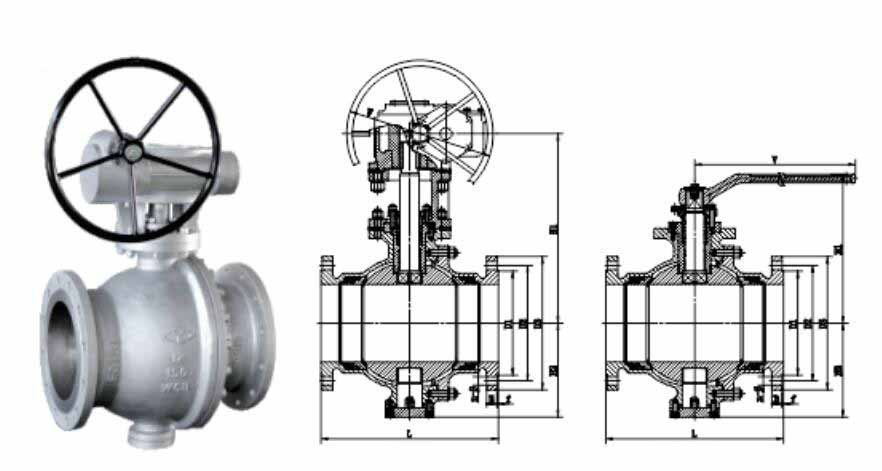
Ball valves are a type of quarter-turn valve that uses a hollow, perforated, and pivoting ball to control the flow of fluids. They are widely used in various industries due to their numerous advantages.
ボールバルブのメリット
One of the main advantages of ball valves is their quick and easy operation. With just a quarter turn of the lever or handle, the valve can be fully opened or closed. This feature allows for efficient flow control and minimizes the time required for manual operation.
Another advantage is their good sealing properties. The design of ball valves ensures a tight seal when closed, preventing any leakage or seepage of fluids. This makes them suitable for applications where leak prevention is crucial, such as in gas pipelines or water treatment plants.
Ball valves are also suitable for throttling, which means they can regulate the flow rate by partially opening or closing the valve. This flexibility allows for precise control over the fluid flow, making them ideal for applications that require variable flow rates.
Disadvantages of Ball Valves
Despite their many advantages, ball valves do have some limitations. One disadvantage is their limited flow capacity compared to other types of valves. The internal design with a hollow ball restricts the flow path, which may result in higher pressure drops across the valve.
加えて, low-quality ball valves may have potential for leakage. It is important to choose high-quality valves from reputable manufacturers to ensure reliable performance and prevent any safety hazards.
さらに, ball valves are not suitable for high-pressure applications. The design and materials used may not withstand extreme pressures, leading to valve failure or damage under high-pressure conditions.
Applications of Ball Valves
Ball valves find extensive use in various industries and systems due to their versatility. They are commonly employed in plumbing systems for residential and commercial buildings, where they provide reliable shut-off capabilities and allow for easy maintenance.
化学処理工場内, ball valves are preferred for their ability to handle corrosive fluids and withstand harsh chemical environments. Their excellent sealing properties make them suitable for controlling the flow of chemicals with precision.
The food and beverage industry also benefits from the use of ball valves. They are often used in processing lines to control the flow of liquids, such as juices, sauces, or dairy products. The smooth interior surface of the valve prevents any accumulation or contamination of the product.
Choosing the Best Valve for Your Applications
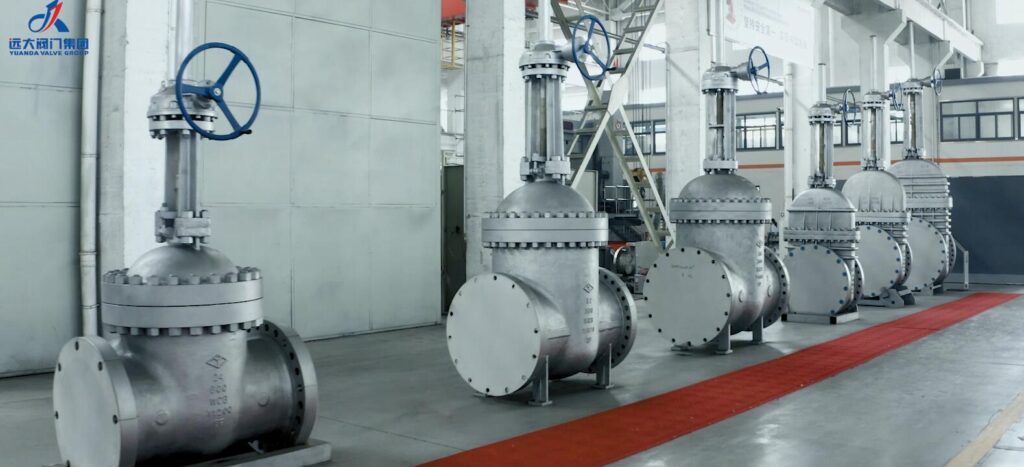
When it comes to choosing the best valve for your applications, there are several factors that need to be considered. One of the key factors is the specific requirements of your application. Gate valves and ball valves have different features and functions, and understanding these differences will help you make an informed decision.
For applications that require a tight shut-off, gate valves are often the preferred choice. Gate valves provide a full flow with low pressure drop, making them suitable for applications where flow control is not a priority. These valves are designed to either fully open or fully close, providing a tight seal when closed. This makes gate valves ideal for applications that require isolation or on/off control.
一方で, ball valves are known for their excellent flow control capabilities. With a quarter-turn operation, ball valves can quickly and easily regulate flow rates. This makes them suitable for applications where precise control over flow is required. さらに, ball valves have low torque requirements, allowing for easy operation even in high-pressure systems.
When choosing between gate valves and ball valves, it is also important to consider the pressure and temperature requirements of your application. Gate valves are typically used in high-pressure systems as they can withstand higher pressures without leaking. しかし, they may not be suitable for applications with extreme temperatures as the metal components can expand or contract significantly.
対照的に, ball valves can handle a wide range of temperatures and pressures. They are often used in industries such as oil and gas, 化学処理, and water treatment where both high pressures and temperatures are common.
結論
The importance of understanding the differences between gate valves and ball valves cannot be overstated. These two types of valves play a crucial role in various industries, including plumbing and industrial sectors. By knowing their advantages and disadvantages, professionals can make informed decisions when selecting the right valve for specific applications.
Choosing the wrong valve can have serious consequences. Operational issues, inefficiencies, and potential safety hazards can arise if the wrong valve is used. 例えば, gate valves are known for their ability to provide a tight seal, making them ideal for applications where leakage must be minimized or prevented altogether. 一方で, ball valves offer excellent control over flow rates and are often preferred in situations where precise regulation is required.
To ensure efficient operations and safety, it is essential to consult with experts in the field. The Farpro valve team has extensive knowledge and experience in recommending the best gate and ball valves for different applications. Their expertise can help professionals avoid costly mistakes and select the most suitable valve for their specific needs.
結論は, understanding the differences between gate valves and ball valves is crucial for choosing the best valve for your applications. By selecting the right valve, you can prevent operational issues, improve efficiency, and ensure safety in your industry. Trusting the expertise of professionals like the Farpro valve team is a wise decision that can save you time, money, and unnecessary headaches. So don’t hesitate to reach out to them when it comes to finding the perfect gate or ball valve for your needs.

